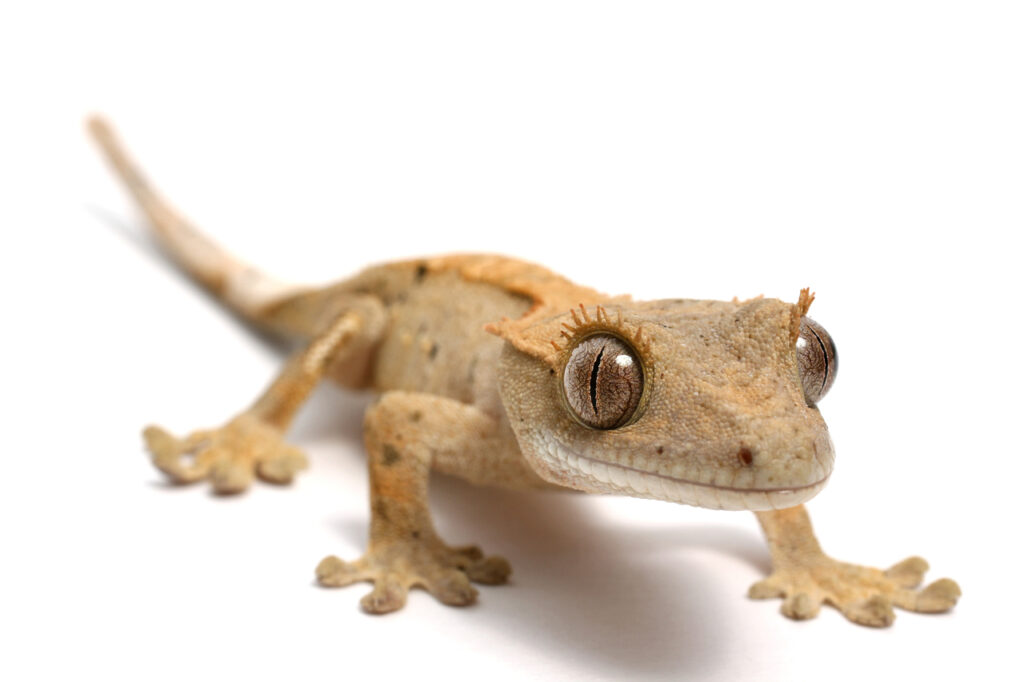Caring for Crested Geckos
Crested geckos, also known as eyelash geckos, are fascinating reptiles native to New Caledonia. With their distinctive appearance and docile nature, crested geckos have become popular pets among reptile enthusiasts.
In this beginner’s guide, we’ll delve into the essentials of caring for crested geckos, from setting up their habitat to meeting their dietary needs.
Habitat Setup
Creating a suitable habitat is essential for the health and well-being of crested geckos.
A glass terrarium or vivarium with adequate ventilation and space for climbing is ideal.
Provide a variety of branches, vines, and plants for climbing and hiding.
Maintain a temperature range of 72-80°F (22-27°C) during the day and slightly cooler at night, along with moderate to high humidity levels of 60-80%.

Feeding and Nutrition
Crested geckos are omnivores, primarily feeding on fruit, nectar, and insects in the wild.
In captivity, offer a balanced diet consisting of commercial crested gecko diet, supplemented with live insects such as crickets, roaches, and mealworms.
Dust insects with calcium and vitamin D3 supplements to prevent nutritional deficiencies.
Handling and Interaction
Handle crested geckos gently and sparingly to minimize stress and potential injury.
Avoid grabbing or squeezing their delicate bodies and allow them to initiate contact.
Crested geckos are primarily arboreal and may leap or drop if startled, so it’s important to handle them over a soft surface and supervise interactions with children and other pets.
Health and Wellness
Monitor your crested gecko’s health closely for signs of illness or injury, including lethargy, loss of appetite, abnormal feces, or skin abnormalities.
Provide regular access to fresh water for drinking and mist the enclosure daily to maintain hydration and humidity levels.
Schedule annual wellness exams with a reptile veterinarian to ensure your gecko remains healthy.

Breeding and Reproduction
Breeding crested geckos can be a rewarding but challenging endeavor.
Ensure proper husbandry and nutrition to promote reproductive health and monitor breeding pairs for signs of aggression or stress.
Females may lay eggs without mating, so provide suitable egg-laying sites and monitor nesting behavior carefully.
Conclusion: Embark on a Reptilian Adventure
In conclusion, caring for crested geckos requires attention to detail and a commitment to providing a suitable habitat and nutrition.
With proper care and handling, crested geckos can thrive in captivity and provide years of enjoyment for reptile enthusiasts.
To learn more about crested geckos and connect with fellow keepers, explore online forums, communities, and reputable breeders dedicated to these charming reptiles.
